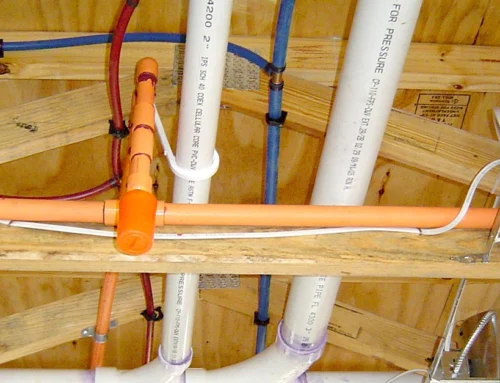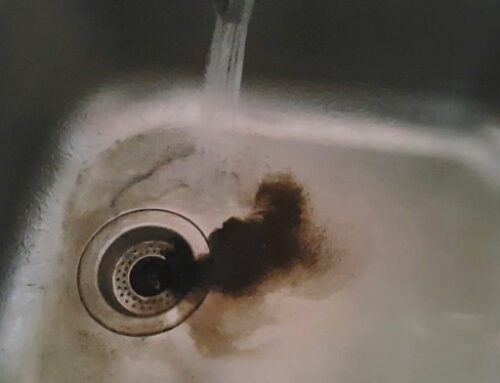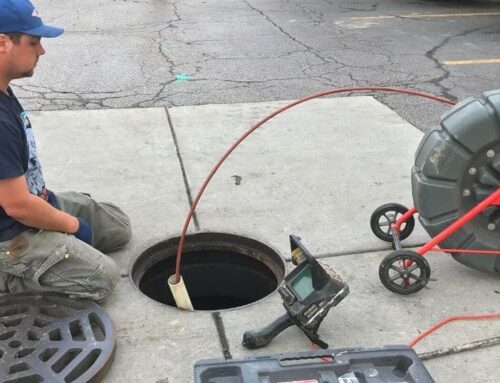A leaky kitchen sink is more than just an annoyance. Left untreated, even a small drip can waste water, raise utility bills, and cause hidden damage to cabinets and flooring. The good news is that many sink leaks can be solved without calling in a professional, especially if you know where to look and how to approach the problem. One of the most effective ways to deal with a leak is by checking and replacing worn-out sink gaskets or washers, since these are often the root cause of drips and puddles under the sink. Learning simple steps like tightening loose fittings or resealing joints can help you stop the leak before it turns into a bigger issue. In this article, we’ll walk through common causes of sink leaks, how to fix them yourself, and when it might be time to get extra help.
Why Kitchen Sink Leaks Happen
Kitchen sink leaks usually come down to wear and tear or loose parts. Since sinks get daily use, the pipes, seals, and fixtures naturally weaken over time. The most common causes include:
- Worn-out rubber gaskets that no longer seal properly.
- Loose connections between pipes, especially around the drain trap.
- Corroded fittings or washers.
- Cracked pipes or sink basins.
- Faulty faucet components.
Understanding these issues is the first step. Once you know what part is causing the problem, fixing it becomes much easier.
Signs You Have a Leak Under the Sink
Not all leaks are obvious at first. Some start small and stay hidden until they cause noticeable damage. Here are signs to watch for:
- Water is pooling at the bottom of the cabinet.
- Musty or damp smells near the sink area.
- Water stains, swelling, or discoloration on the cabinet wood.
- A steady drip is coming from the faucet or under the sink.
- Increased water bills without a clear reason.
Catching leaks early can save time, money, and frustration. If you spot any of these signs, it’s worth investigating right away.
Tools and Materials You’ll Need
Before attempting any DIY fix, it’s best to gather a few basic supplies. Having these items nearby will save time once you get started:
- Adjustable wrench
- Plumber’s tape (Teflon tape)
- Replacement washers or gaskets
- Bucket or towels to catch water
- Silicone sealant or plumber’s putty
- Flashlight for spotting leaks
- Screwdrivers (flathead and Phillips)
These tools cover most situations you’ll encounter when repairing a leaky kitchen sink.
Step 1: Find the Source of the Leak
The first and most important step is figuring out exactly where the water is coming from. To do this, dry the entire area under the sink with a towel. Then, run water in the sink and carefully check around the faucet base, drain pipes, and connections. If necessary, place a paper towel under different fittings to see where water first appears. Identifying the source helps you decide whether you need a simple tightening, a washer replacement, or something more involved.
Step 2: Tighten Loose Connections
Loose connections are one of the simplest issues to fix. Using your adjustable wrench, gently tighten slip nuts or pipe fittings around the P-trap and drain lines. Be careful not to overtighten, as this can damage the fittings. In many cases, a small adjustment is enough to stop the leak completely.
Step 3: Replace Worn-Out Washers or Gaskets
If tightening connections doesn’t solve the issue, the problem may be a deteriorated washer or gasket. These rubber or plastic parts create a seal between connections, but over time they crack or flatten.
- Turn off the water supply under the sink.
- Remove the leaking connection or faucet part.
- Take out the old washer or gasket and replace it with a new one of the same size.
- Reassemble the parts and test the sink for leaks.
This quick fix often works for faucet drips and drain leaks.
Step 4: Check the Faucet Base
Leaks at the base of the faucet are another common problem. If water pools around the handles or where the faucet meets the sink, the O-rings may be worn out. Replacing these O-rings can stop leaks without needing to replace the entire faucet. Simply disassemble the faucet, swap out the damaged parts, and reassemble.
Step 5: Inspect and Seal the Sink Drain
Sometimes the issue is not with the pipes or faucet but with the sink drain itself. If water seeps around the drain opening, the plumber’s putty or sealant may have failed.
To fix this:
- Loosen and remove the drain flange.
- Clean off any old sealant.
- Apply fresh plumber’s putty or silicone sealant around the opening.
- Reseat the drain flange and tighten it back into place.
This creates a watertight seal that prevents leaks.
Step 6: Use Plumber’s Tape for Extra Security
If you notice leaks around threaded pipe connections, wrapping the threads with plumber’s tape can help. This tape fills in small gaps and improves the seal when the fittings are tightened. It’s a quick and inexpensive way to reinforce connections and prevent drips.
Preventing Future Sink Leaks
While fixing a leak solves the immediate issue, prevention saves headaches down the road. Here are a few simple steps to keep your sink in good shape:
- Regularly check for moisture under the sink.
- Avoid using harsh chemicals that can corrode pipes.
- Clean the drain trap to prevent clogs that stress the fittings.
- Replace washers and gaskets every few years as part of maintenance.
- Tighten fittings at the first sign of dripping.
Staying proactive means fewer surprises and less water damage over time.
When to Call a Professional
Some leaks are simple enough for DIY repairs, but others may be too complex. If you notice persistent leaks, rusted pipes, or water damage spreading beyond the sink area, it’s best to call in a licensed plumber. They can diagnose hidden problems and ensure a long-term solution.
Common Mistakes to Avoid
When fixing a leaky kitchen sink, beginners often make a few mistakes:
- Overtightening fittings can crack pipes or strip threads.
- Using the wrong size washers or gaskets.
- Forgetting to shut off the water supply before repairs.
- Ignoring small leaks, which often turn into bigger problems.
Avoiding these mistakes will make your repair smoother and more effective.
Conclusion
Fixing a leaky kitchen sink doesn’t have to be overwhelming. With basic tools, a little patience, and the right approach, most leaks can be stopped quickly and affordably. By checking washers, tightening connections, resealing drains, and using plumber’s tape when needed, you can prevent wasted water and expensive damage. Regular inspections and small repairs go a long way in keeping your kitchen sink running smoothly. And if the problem seems too big to handle, calling a professional ensures peace of mind. Taking care of leaks right away protects both your home and your wallet.











